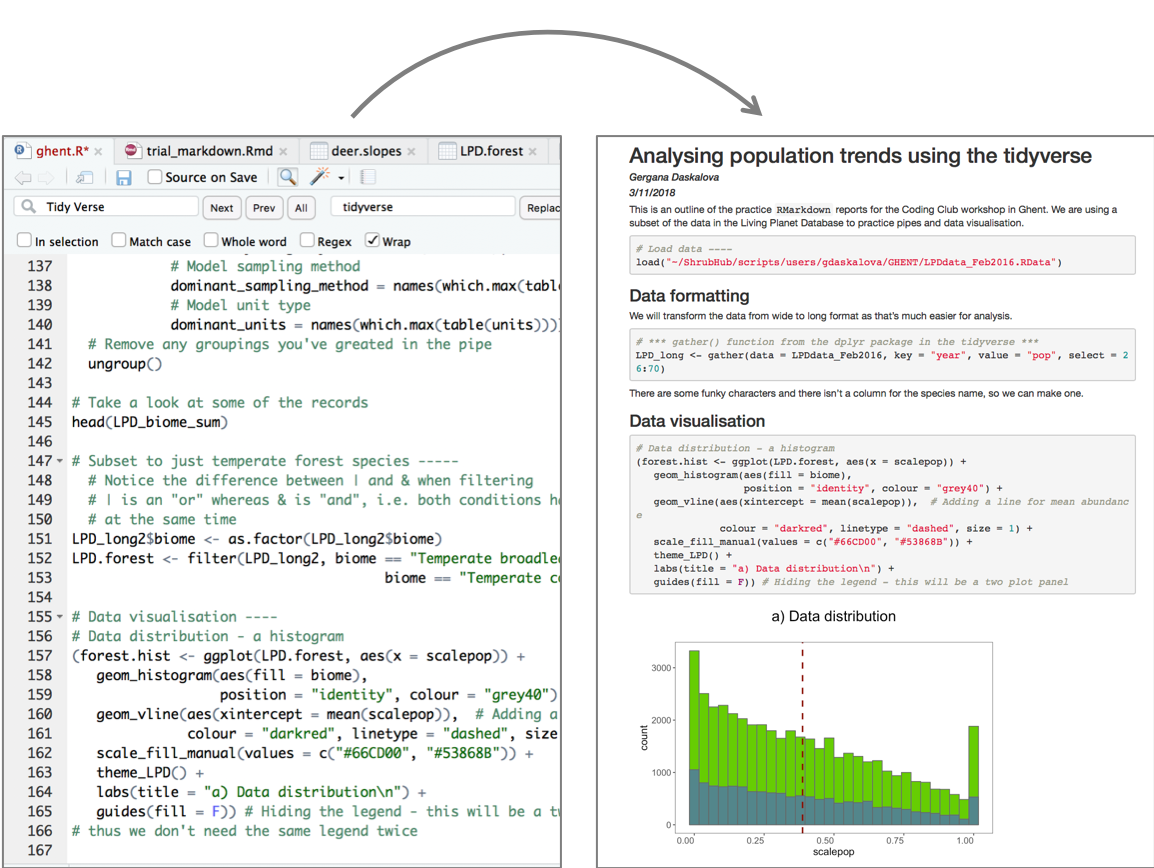

#Download rmarkdown how to#
The page Dashboards with R Markdown explains how to format a R Markdown report as a dashboard.The page Organizing routine reports demonstrates how to routinize your report production with auto-generated time-stamped folders.Other pages in this handbook expand on this topic:

#Download rmarkdown update#
Such documents can be produced to update on a routine basis (e.g. daily surveillance reports) and/or run on subsets of data (e.g. reports for each jurisdiction). You can create an entire formatted document, including narrative text (can be dynamic to change based on your data), tables, figures, bullets/numbers, bibliographies, etc.
#Download rmarkdown code#
It can generate static or interactive outputs, in Word, pdf, html, powerpoint, and other formats.Īn R Markdown script intersperces R code and text such that the script actually becomes your output document. R Markdown is a widely-used tool for creating automated, reproducible, and share-worthy outputs, such as reports. 46 Version control and collaboration with Git and Github.33 Demographic pyramids and Likert-scales.19 Univariate and multivariable regression.Try it out! Note that if you run this code in a R script, the table will open up in your Viewer Pane in RStudio, but you will need to run the code within a RMarkdown document in order to produce a share-able HTML output. Here, I’ve passed a list through with two vectors, where the first specifies the page length values and the second the displayed options. LengthMenu: this allows you to specify display options for how many rows of data to display on each page. You may move the letters around to control for where the buttons are placed, where for instance lfrtipB would place the buttons at the very bottom of the widget.īuttons: you pass a character vector through to specify what buttons to actually display in the widget, where ‘copy’ stands for copy to clipboard, ‘csv’ stands for ‘export to csv’, etc. Here, we have specified this to be Blfrtip, where: 2 I usually think of these as ‘expanded features’ that aren’t / haven’t been built into the DT package yet, but are available in the ‘source’ JavaScript library DataTables.ĭom: This argument defines the table control elements to appear on the page and in what order. Options: this argument is where you feed in all the additional customisation options, which is specified in a list. Iris %>% datatable( extensions = 'Buttons',īuttons = c( 'copy', 'csv', 'excel', 'pdf', 'print'),Īnd here is a brief explanation for each of the arguments used in the above code:Įxtensions: this takes in a character vector of the names of DataTables plug-ins, but only plugins supported by the DT package can be used here. (Credits to Jonathan Ng for sharing this trick with me in the first place! His original video tutorial that first mentions this is available here) This will be implemented using the DT package created by RStudio, which provides an R interface to the JavaScript library DataTables. In this post, I am going to share a trick on how to implement this feature within RMarkdown (and therefore means you can do this in flexdashboard) such that the users of your dashboards can export/download your source data. Moreover, having the data available within the dashboard itself helps with reproducibility, in the sense that one can more easily trace back the relationship between the source data and the reported analysis or visualisation. This enables any keen user to extract the source data to produce charts or analysis on their own “off-dashboard”. Traditionally, people also like Excel dashboards for another reason, which is that all the data that is reported in the dashboard is usually self-contained and available in the Excel file in itself, provided that the source data within Excel isn’t hidden and protected. This is an advantage that you don’t really get with other dashboarding solutions such as Tableau and Shiny, as far as I’m aware. Since it’s possible to (i) export these ‘flexdashboards’ as static HTML files that can be opened on practically any computer (virtually no dependencies), (ii) shared as attachments over emails, and (iii) run without relying on servers and Internet access, they rival ‘traditional’ Excel dashboards on portability.

In an earlier post April this year, I discussed using flexdashboard (with RMarkdown) as an appealing and practical R alternative to Excel-based reporting dashboards.


 0 kommentar(er)
0 kommentar(er)
